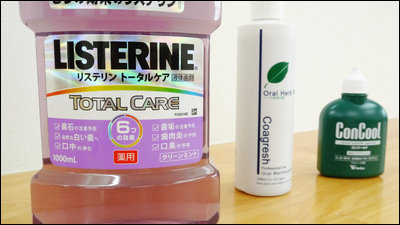A company that farms large amounts of medical maggots to treat wounds with 'maggots'

Many people may have the impression that
'People are shocked': the Welsh firm breeding maggots to heal wounds | Healthcare industry | The Guardian
https://www.theguardian.com/business/2023/jan/22/breeding-maggots-heal-wounds-welsh-firm-biomonde
How is Larval Therapy Produced? | Your Questions Answered-YouTube
Some ethnic groups in Central America and Southeast Asia have long understood that ``a wound infested with maggots heals quickly,'' and have used maggots to treat wounds. It was during World War I that Western civilization began to pay attention to the therapeutic effects of maggots, and by the end of the 1930s, 300 hospitals in the United States and Canada were using maggots for treatment. thing. After that, maggot therapy declined with the advent of antibiotics, but in recent years, due to growing concerns about drug-resistant bacteria that are ineffective against antibiotics, maggot therapy has begun to attract attention again .
The UK's National Health Service (NHS) approved treatment using maggots in 1995, and in the United States, the Food and Drug Administration (FDA) approved it in 2004. At the time of writing, the United States, Australia, China, Clinical grade maggots are farmed in various parts of Turkey and Africa. Professor Yamni Nigam of Swansea University, UK, an expert in maggot therapy, said, ``These are not maggots crawling in sewage or trash cans, they are clinically bred,'' and are used for medical purposes. It explains that maggots that are caught are not filthy.
BioMonde, a medical company in Wales, UK, is engaged in the business of selling cultured sterile maggot worms for maggot therapy to medical institutions in small bags about the size of tea bags. Doctors put the sachet on the patient's wound and leave it for about four days, and the maggots treat the wound through the fine mesh of the sachet and are removed from the patient's body before becoming a fly.
Maggots in contact with the wound release chemicals that decompose dead tissue into liquid, swallow the liquefied tissue, and take in and digest harmful bacteria together. Maggots are about the size of a grain of rice before being placed in a wound, but grow to about 10-12 mm during treatment. Since maggots do not have teeth, the patient's body is not physically bitten, and living tissue cannot be eaten.
'People are shocked to see how effective the maggot treatment is,' said Vicky Phillips, clinical leader and former nurse at BioMonde. 'People are amazed to see how clean it is.'
BioMonde keeps 24,000 male and female flies in clean rooms that are only accessible by professional staff wearing hairnets and face masks. The reason why the fly breeding case is covered with women's tights is that it has been found that using tights can maintain hygiene more effectively than implementing a complicated ventilation system.

Flies lay eggs about twice a week, and the staff disinfects and cleans the eggs to sterilize them, and the hatched larvae are also disinfected again in a special cabinet. Finally, staff picks up the larvae with a pipette, puts them into a polyester sachet, seals it, and ships it in a tube according to your prescription.
Cases in which maggot therapy is used include
BioMonde provides more than 5,000 treatment packages to 250 medical institutions annually, and a total of 15,000 treatment packages in the rest of Europe. Although the price of one small bag depends on the size, the normal size is about 250 pounds (about 40,000 yen), which is somewhat expensive. However, by improving the speed at which the wound clears, the treatment period can be greatly reduced, the labor and cost of surgically removing the rotten part can be saved, and sometimes the patient's limb can be saved from the danger of amputation. .

Nigam et al.'s research team is conducting research on synthesizing antibacterial molecules secreted by maggots and using them as therapeutic agents for infectious diseases, and on the mechanism by which chemical substances secreted by maggots improve the healing rate of wounds. doing research. According to Mr. Nigam, it is possible that the wound heals by chance because the hormones secreted by maggots happen to be similar to molecules secreted by humans.
BioMonde is also researching ways to provide the beneficial effects of maggot therapy without using maggots, and is expected to be applied to ophthalmic and dental treatments.
Related Posts:







